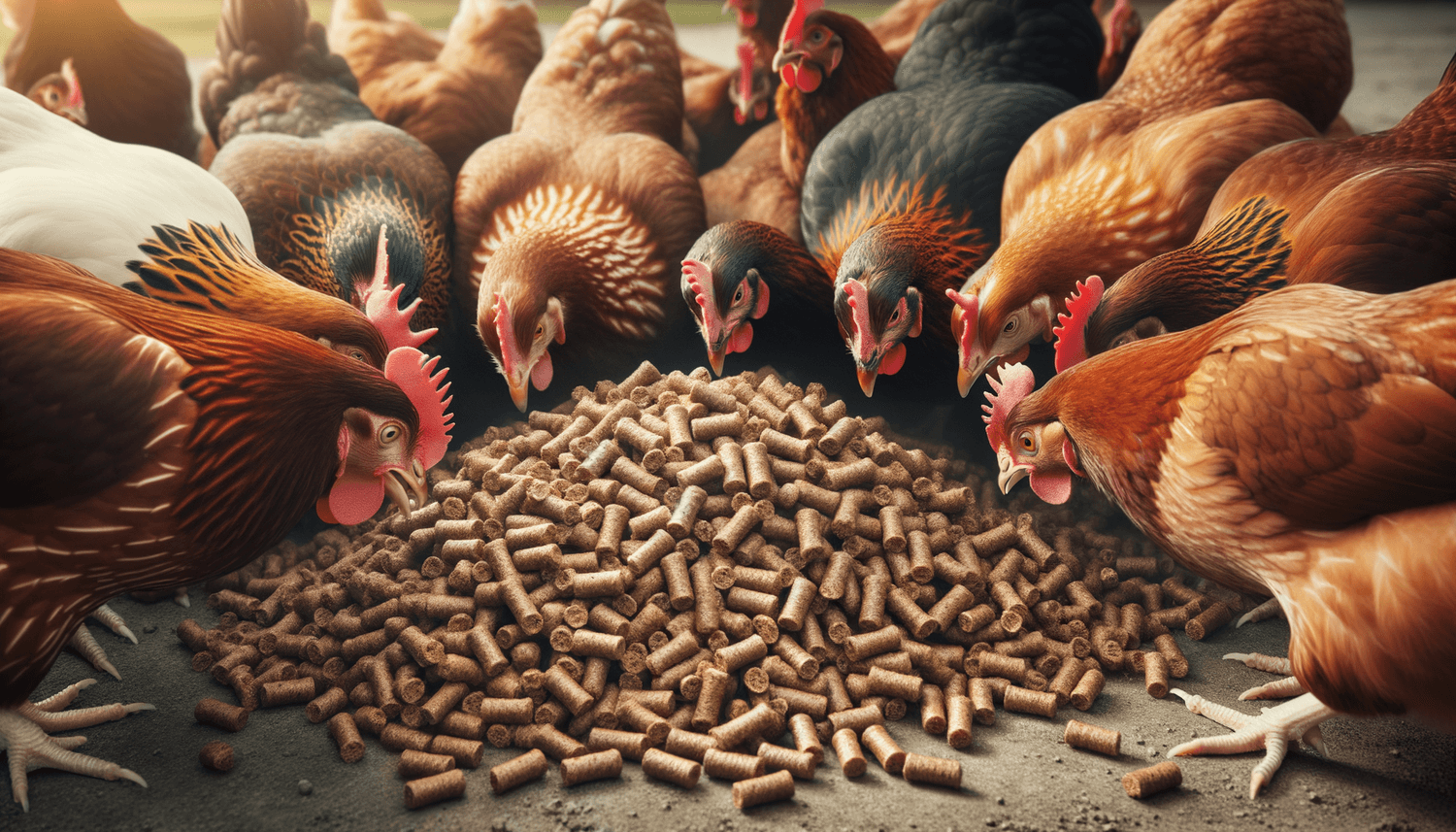“`html
Yes, chickens can eat layer pellets. Layer pellets are a type of feed specifically formulated for laying hens to provide a balanced diet with the necessary nutrients for egg production. They contain a mix of protein, calcium, and other essential vitamins and minerals to support hen health and eggshell quality.
Quick Summary
- Chickens can eat layer pellets.
- These pellets provide a balanced diet for laying hens, necessary for optimal egg production.
- Key benefits include improved eggshell quality and enhanced overall hen health; there are minimal risks when fed as directed.
- Recommended feeding guidelines involve making layer pellets the primary diet for laying hens and providing constant access.
Overview of Layer Pellets
Layer pellets are a form of commercial feed designed to meet the dietary needs of laying hens. They are small, compact, and uniform in size, making them easy for chickens to eat. They typically contain around 16-18% protein, as well as essential nutrients like calcium and phosphorus, which are crucial for egg production.
Benefits and Risks of Layer Pellets for Chickens
Layer pellets offer numerous benefits, including providing a complete and balanced diet for adult laying hens, promoting strong eggshells with sufficient calcium content, and supporting overall hen health. The primary risk associated with layer pellets could be overconsumption, leading to obesity if not monitored, but this risk is low when pellets are fed properly as part of a balanced diet.
Feeding Guidelines
Layer pellets should be provided as the main food source for laying hens. The feed can be offered ad libitum, meaning chickens have constant access to the pellets, allowing them to consume what they need for their energy and production levels. Fresh water should always be available, and pellets should be stored in a dry, cool place to maintain their nutritional value.
Alternatives
If layer pellets are not available or suitable, alternatives include whole grains, such as corn or wheat, and homemade mixes that include a variety of seeds, grains, and calcium sources. However, these require more effort to balance properly and are not as convenient or potentially as nutritionally complete as commercial layer pellets.
Expert Opinions
Poultry nutritionists and veterinarians often recommend layer pellets as the best option for feeding laying hens due to their complete and balanced nutritional profile. Studies have shown that hens fed with a diet including layer pellets produce eggs with better shell quality compared to those fed with unbalanced diets.
Frequently Asked Questions
After learning about the suitability of layer pellets for chickens, here are some common questions that might arise.
Can roosters or non-laying hens eat layer pellets?
While there is no immediate harm in roosters or non-laying hens consuming layer pellets, these feeds are high in calcium and designed specifically for laying hens. Therefore, it is not ideal for roosters or non-layers as excessive calcium can lead to health issues in these birds.
How often should I replenish the layer pellets in the feeder?
Layer pellets should be replenished as needed to ensure that laying hens have constant access. It is crucial to regularly check the feeder to ensure the feed is fresh and dry, as spoiled feed can lead to health issues.
Is there a difference between layer pellets and other forms of chicken feed, like crumbles or mash?
Yes, layer pellets, crumbles, and mash differ in consistency and form. Pellets are compressed feed in small, solid pellets, crumbles are broken-up pellets, and mash is a loose, unformed feed. All forms can be nutritionally similar, but pellets tend to be less wasteful and easier to manage.
“`

















